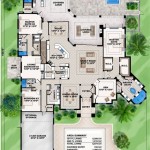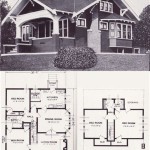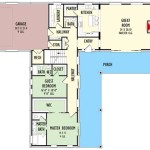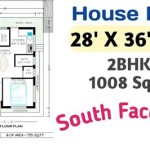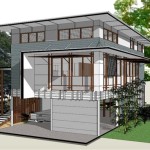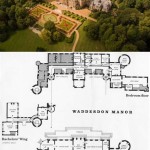Cabin Floor Plans With Loft: Maximizing Space and Charm
Cabin floor plans with lofts represent a popular choice for individuals and families seeking a compact and aesthetically pleasing living space. The inclusion of a loft optimizes the use of vertical space, creating additional functional areas without significantly increasing the footprint of the structure. These plans cater to a range of needs, from vacation homes and guest cottages to permanent residences for minimalist lifestyles.
The appeal of cabin floor plans with lofts lies in their inherent ability to balance practicality and charm. The loft area, often accessed by a ladder or staircase, can serve as a bedroom, a home office, a reading nook, or simply additional storage. The main floor typically houses the living area, kitchen, and bathroom, ensuring essential amenities are readily accessible. This arrangement fosters a sense of spaciousness and allows for efficient use of every square foot.
Furthermore, the design flexibility of cabin floor plans with lofts allows for customization to suit individual preferences and site conditions. Variations in layout, materials, and architectural style can create unique and personalized living environments. The choice of windows, roofing materials, and exterior finishes can further enhance the aesthetic appeal and integrate the cabin seamlessly into its natural surroundings. This adaptability makes cabins with lofts a versatile option for a diverse range of settings, from secluded woodland retreats to cozy lakeside getaways.
Key Considerations When Selecting a Cabin Floor Plan With Loft
The selection of a cabin floor plan with a loft involves careful consideration of several crucial factors. These factors directly impact the functionality, comfort, and overall satisfaction with the final product. Understanding these considerations is essential for making an informed decision and ensuring the chosen plan aligns with individual needs and priorities.
Space Requirements and Usage: The intended use of the cabin is a primary determinant in selecting an appropriate floor plan. A cabin intended for weekend getaways for a small family will have different space requirements than one intended for full-time living by a single individual or couple. The square footage of the main floor and the loft should be carefully evaluated to ensure sufficient space for all desired activities. Furthermore, the layout of the rooms and the flow of traffic should be considered to optimize functionality and comfort. The number of occupants, the frequency of use, and the anticipated activities within the cabin all contribute to determining the optimal size and configuration.
Accessibility and Safety: The accessibility of the loft area is a paramount concern, particularly for individuals with mobility limitations. While ladders are a common and space-saving option, they may not be suitable for everyone. Staircases, while requiring more space, offer a safer and more comfortable alternative for accessing the loft. The design of the staircase should adhere to building codes and safety standards, including appropriate handrails and tread depths. Additionally, the height of the loft ceiling should be sufficient to allow for comfortable standing and movement. Headroom is a critical aspect of loft design that directly affects the usability and comfort of the space. Safety features, such as railings and guards, are essential to prevent falls from the loft.
Lighting and Ventilation: Adequate lighting and ventilation are crucial for creating a comfortable and healthy living environment within a cabin with a loft. Natural light can be maximized through the strategic placement of windows and skylights. Windows not only provide natural illumination but also enhance the connection with the surrounding environment. Ventilation is essential for maintaining air quality and preventing moisture buildup. Proper ventilation can be achieved through the use of operable windows, vents, and exhaust fans. Consideration should be given to cross-ventilation, which allows for the natural flow of air throughout the cabin. In addition to natural light and ventilation, artificial lighting should be carefully planned to provide adequate illumination for various activities. A combination of ambient, task, and accent lighting can create a welcoming and functional atmosphere.
Popular Cabin Floor Plan With Loft Designs
Several popular cabin floor plan designs with lofts cater to diverse needs and preferences. These designs offer various layouts, architectural styles, and square footage, providing a range of options for potential cabin owners.
The A-Frame Cabin: The A-frame cabin is a classic and iconic design characterized by its steeply pitched roof that extends to the ground. This design is not only aesthetically pleasing but also offers structural stability and efficient snow shedding. A-frame cabins typically feature a loft that spans the width of the structure, providing ample space for a bedroom or living area. The main floor usually houses the kitchen, bathroom, and a small living area. The A-frame design inherently lends itself to maximizing vertical space, making it an ideal choice for incorporating a loft. The triangular shape also creates a distinctive and cozy interior atmosphere.
The Rustic Lodge: Rustic lodge-style cabins emphasize natural materials and a connection to the surrounding environment. These cabins often feature exposed beams, wood siding, and stone accents. The loft in a rustic lodge cabin may be accessed by a handcrafted staircase and feature exposed wood framing. The main floor typically includes a large fireplace, a spacious living area, and an open kitchen. The overall design evokes a sense of warmth, comfort, and connection to nature. Large windows are often incorporated to maximize views and natural light. The use of natural materials and earthy tones further enhances the rustic aesthetic.
The Modern Cabin: Modern cabin designs integrate sleek lines, minimalist aesthetics, and contemporary materials. These cabins often feature large windows, open floor plans, and energy-efficient technologies. The loft in a modern cabin may be designed with a minimalist approach, featuring clean lines and simple finishes. The main floor typically includes a streamlined kitchen, a comfortable living area, and a modern bathroom. Modern cabins often incorporate sustainable design principles, such as solar panels and rainwater harvesting systems. The focus is on creating a functional, stylish, and environmentally conscious living space.
Factors Affecting Construction Costs
The construction cost of a cabin with a loft is influenced by several factors, including the size of the cabin, the materials used, the complexity of the design, and the location of the building site. A clear understanding of these factors is essential for developing a realistic budget and avoiding unexpected expenses. Careful planning and cost-effective material choices can significantly impact the overall affordability of the project.
Material Selection: The choice of building materials significantly impacts the overall cost. Using locally sourced and readily available materials can reduce transportation costs and potentially lower material prices. Considerations include the type of wood used for framing and siding, the roofing material, the windows and doors, and the interior finishes. Sustainable and eco-friendly materials may have a higher initial cost but can offer long-term benefits in terms of energy efficiency and durability. Balancing cost and quality is essential in making informed material selection decisions.
Labor Costs: Labor costs vary depending on the location, the experience of the contractors, and the complexity of the project. Obtaining multiple bids from qualified contractors can help ensure competitive pricing. It is important to thoroughly vet potential contractors and review their past work. A written contract outlining the scope of work, payment schedule, and timeline is essential for avoiding misunderstandings and disputes. Consider the potential for owner involvement in certain aspects of the construction process to reduce labor costs, but only if qualified and experienced.
Site Preparation and Infrastructure: The condition of the building site and the availability of infrastructure can significantly impact construction costs. Clearing the site, grading the land, and providing access for construction equipment can all add to the overall expense. Connecting to utilities, such as water, electricity, and sewer, can also be costly. In remote locations, alternative solutions, such as well water and septic systems, may be necessary. Thorough site assessment and planning are crucial for identifying potential challenges and developing cost-effective solutions.

20x30 Cabin W Loft Plans Package Blueprints Material List 49 95 With Floor Plan

Small Cabin Plan With Loft House Plans

C0276b Cabin Plan Details E6c Small House Floor Plans Tiny

Adventureideaz Com Projetos De Casas Pequenas Interiores Simples

Pin On Standard Model Floor Plans

Small Cabin Plan With Loft House Plans

Small Cabin House Plans With Loft And Porch For Fall Houseplans Blog Com

Small Cabin House Plans With Loft And Porch For Fall Houseplans Blog Com

Cabin House Plan With Loft 2 Bed 1 Bath 1122 Sq Ft 176 1003
Small Cabin House Plans With Loft And Porch For Fall Houseplans Blog Com


